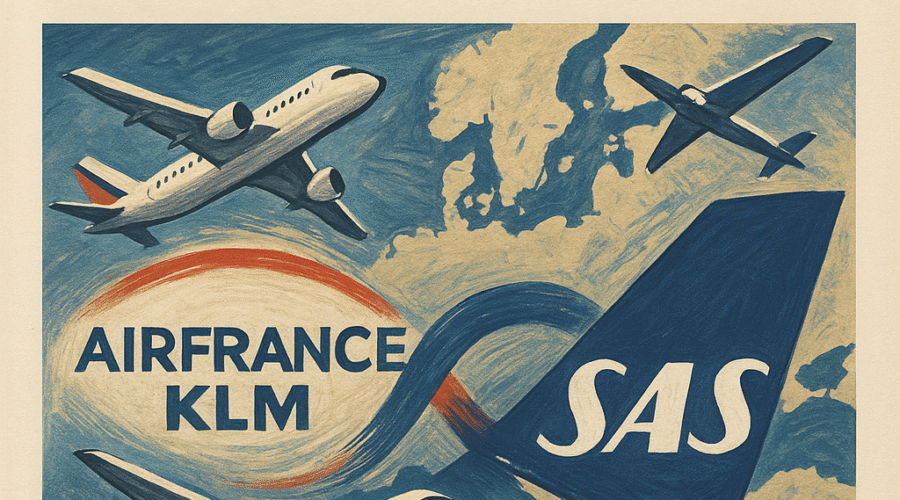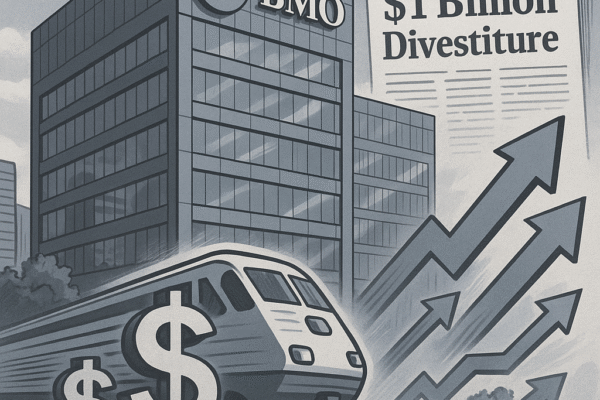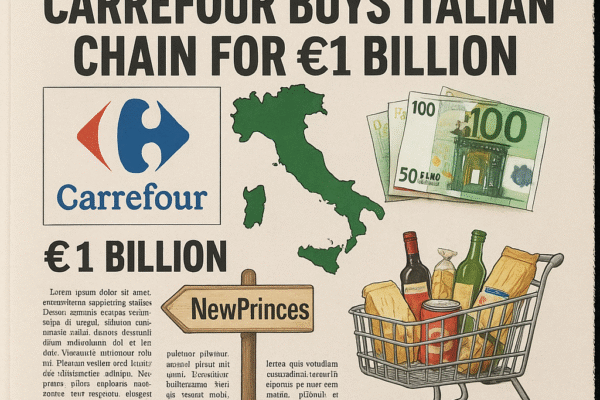Air France-KLM’s announcement to acquire a 60.5% majority stake in Scandinavian Airlines (SAS) represents a transformative consolidation move in European aviation, signaling a strategic pivot toward integrated network dominance and synergy realization. This transaction, structured through the acquisition of Castlelake’s (32.0%) and Lind Invest’s (8.6%) holdings, elevates Air France-KLM from its current 19.9% minority position while retaining the Danish State’s 26.4% stake. Valued based on SAS’s closing financial performance metrics—including EBITDA and net debt—the deal anticipates regulatory approval for a late-2026 completion, positioning SAS as a subsidiary within the Air France-KLM Group. The move capitalizes on SAS’s successful post-Chapter 11 restructuring, which delivered €4.1 billion in 2024 revenue and operational stability, while unlocking projected “three-digit million” euro synergies through deeper integration of loyalty programs, route networks, and cost structures across the combined entity[1][9][11][16].
💼 Seasoned CorpDev / M&A / PE expertise
Strategic Rationale for Consolidation
Network Expansion and Market Access
The acquisition fundamentally reconfigures Air France-KLM’s competitive positioning in Northern Europe, leveraging SAS’s hubs in Copenhagen, Oslo, and Stockholm to create an integrated Scandinavian gateway. This complements Air France-KLM’s existing Paris and Amsterdam strongholds, extending the group’s reach to over 130 destinations served by SAS’s 138 aircraft. The commercial cooperation initiated in 2024—featuring extended codeshares covering 33 reciprocal European routes beyond each carrier’s hubs—has already demonstrated tangible benefits, with KLM and Air France operating 200 weekly flights to SAS hubs. Full integration now enables seamless connectivity across 320+ SkyTeam alliance routes, directly challenging Lufthansa Group’s Star Alliance dominance in the region[5][12][13]. For Scandinavian travelers, this translates into enhanced transatlantic connectivity via Air France-KLM’s joint ventures with Delta and Virgin Atlantic, effectively positioning Copenhagen as a global transfer hub rivaling Frankfurt and Amsterdam[16][18].
Financial and Operational Synergies
Post-restructuring SAS presents a financially optimized platform for integration, having reduced net debt to SEK 22-24 billion (€2.0-2.2 billion) following its August 2024 Chapter 11 emergence. The airline’s improved operational metrics—including recognition as the world’s most punctual carrier—provide immediate synergy opportunities in four key areas: fuel procurement optimization across combined fleets; maintenance cost rationalization through shared technical resources; IT infrastructure consolidation; and loyalty program integration between SAS’s EuroBonus (8 million members) and Air France-KLM’s Flying Blue. CFO Steven Zaat projects “three-digit million” euro annual synergies, with network coordination alone expected to boost passenger yields by 4-7% on overlapping European routes. The deeper integration extends beyond commercial activities to include joint sustainability initiatives, critical for meeting EU Fit for 55 emissions targets[1][9][17][18].
SAS’s Restructuring Journey and Financial Revival
Chapter 11 Turnaround and Ownership Transition
SAS’s path to acquisition viability was forged through a complex 25-month Chapter 11 restructuring, finalized in August 2024 with a $1.2 billion recapitalization. The process eliminated $2 billion in debt, terminated 80 aircraft leases, and delisted shares held by 250,000 legacy investors. Critical to its revival was the $144.5 million equity injection from Air France-KLM in 2023, which secured the carrier’s entry into SkyTeam—replacing its Star Alliance affiliation—and established commercial cooperation frameworks. Operational improvements followed rapidly: July 2024 marked SAS’s most profitable month historically, with 2024 revenue reaching €4.1 billion (up 46% from pre-filing 2022) and EBITDA margins recovering to 12%. This financial rehabilitation met Air France-KLM’s contractual thresholds for exercising its majority-stake option, demonstrating the efficacy of the phased investment approach[3][8][10][17].
Current Financial Positioning and Fleet Strategy
SAS enters the acquisition with a streamlined operational profile, featuring a 138-aircraft fleet optimized for regional efficiency and long-haul capability. The airline’s Q2 2024 financials reveal deliberate balance sheet management: net debt of SEK 33.5 billion (€2.9 billion) includes SEK 4.6 billion in new lease liabilities, offset by SEK 4.6 billion positive operating cash flow. Fleet renewal remains central to SAS’s strategy, with Airbus A320neo and A350 deliveries progressively replacing older models to reduce fuel consumption by 18% per ASK. This aligns with Air France-KLM’s own fleet modernization goals, creating joint procurement leverage opportunities. Crucially, SAS’s 2024 performance metrics—25 million passengers carried, 60,000 tons of cargo transported—demonstrate restored market confidence, providing the traffic volume necessary for hub optimization at Copenhagen[1][17].
Integration Roadmap and Synergy Realization
Commercial Integration Phasing
The integration will unfold in three structured phases, beginning with loyalty program unification in 2025. EuroBonus and Flying Blue members will gain reciprocal earning/burning privileges across all routes, with elite status benefits extending to SkyPriority services. Phase two (2026) focuses on network harmonization, eliminating redundant intra-Scandinavian routes while expanding long-haul connections from Copenhagen to Asia-Pacific destinations like Singapore and Seoul—markets where Air France-KLM holds competitive advantages. The final operational phase (2027) consolidates maintenance operations at Amsterdam Schiphol and Paris CDG hubs, targeting 15% reduction in technical downtime through shared engineering resources. Crucially, the integration preserves SAS’s brand identity for Scandinavian point-to-point routes while adopting Air France-KLM’s operational standards for intercontinental services[13][16].
Cost Synergy Levers and Labor Implications
Steven Zaat’s synergy projections derive from four primary cost levers: fuel hedging consolidation (€45-60 million annual savings), combined cargo operations leveraging KLM’s Martinair expertise (€30 million), shared IT infrastructure reducing SaaS expenses by 25%, and administrative function integration. Notably, labor rationalization remains deliberately excluded from synergy calculations—a strategic concession to Scandinavian labor unions and the Danish government’s retained 26.4% stake. Instead, workforce integration focuses on cross-training programs, with SAS crews gaining access to Air France-KLM’s European crew bases to improve aircraft utilization. This approach mitigates regulatory risk while addressing Scandinavia’s high labor cost environment through productivity gains rather than headcount reduction[9][11][18].
Regulatory and Financing Considerations
Antitrust Scrutiny and Mitigation Strategies
The transaction faces rigorous EU antitrust examination, particularly regarding route concentration on key corridors like Paris-Stockholm (where combined market share reaches 68%) and Amsterdam-Oslo (61%). To preempt regulatory objections, Air France-KLM has committed to slot relinquishment at Copenhagen Airport—where it controls 42% of peak-hour movements—and will offer interline agreements to competitors like Norwegian Air. The Danish State’s retained stake provides political leverage, with Transport Minister Thomas Danielsen publicly conditioning approval on preserving SAS’s Copenhagen hub operations and 8,500 Scandinavian jobs. Historical precedent suggests conditional approval: The European Commission’s 2020 clearance of Air France-KLM’s Virgin Atlantic stake required similar slot concessions at London Heathrow[5][10][15].
Financing Structure and Balance Sheet Impact
Air France-KLM will fund the acquisition through a hybrid approach: €800-900 million from existing liquidity reserves, supplemented by a €500 million “vanilla bond” issuance in late-2025. Critically, the transaction structure defers payment until closing (H2 2026), with the final price adjusting based on SAS’s trailing 12-month EBITDA and net debt. This protects Air France-KLM from valuation erosion should SAS’s performance deteriorate pre-closing. The deal maintains the group’s leverage targets, with net debt/EBITDA remaining below 2.5x—well within investment-grade parameters. Importantly, the financing avoids impacting Air France-KLM’s €2 billion hybrid debt reduction program, preserving its credit rating trajectory[9][11][18].
European Aviation Consolidation Context
Comparative Transaction Analysis
This acquisition accelerates the fragmentation-reduction trend sweeping European aviation, mirroring Lufthansa’s moves with ITA Airways (41% stake) and Air Baltic. The SAS transaction distinguishes itself through its phased approach: Unlike Lufthansa’s upfront €325 million ITA investment, Air France-KLM’s incremental stake-building allowed performance validation before committing to control. Financial metrics further differentiate the deals: SAS’s acquisition multiple of 4.2x 2024 EBITDA compares favorably to ITA’s 7.1x, reflecting SAS’s post-restructuring efficiency. The table below contrasts key consolidation transactions:
| Acquirer | Target | Stake | EV/EBITDA | Synergy Target |
|---|---|---|---|---|
| Air France-KLM | SAS | 60.5% | 4.2x | €300M+ |
| Lufthansa | ITA Airways | 41% | 7.1x | €400M |
| IAG | Air Europa | Pending | N/A | €500M |
This transaction establishes a template for future European airline consolidation, particularly for state-involved carriers like TAP Air Portugal, where phased investment with performance triggers could overcome political resistance[10][11][18].
Sources
https://www.globenewswire.com/news-release/2025/07/04/3110191/0/en/Air-France-KLM-initiates-proceedings-to-take-a-majority-stake-in-SAS.html, https://nltimes.nl/2025/07/04/air-france-klm-bid-takeover-scandinavian-airline-sas, https://avitrader.com/2024/08/28/sas-exits-u-s-chapter-11-bankruptcy-with-stronger-balance-sheet-and-new-ownership/, https://french-business-law.com/business_laws/sas-or-sarl-article27/, https://www.ainvest.com/news/air-france-klm-nordic-gambit-minority-stake-cement-dominance-european-aviation-2507/, https://www.marketscreener.com/quote/stock/AIR-FRANCE-KLM-4604/news/AIR-FRANCE-KLM-Air-France-KLM-initiates-proceedings-to-take-a-majority-stake-in-SAS-50430874/, https://www.sasgroup.net/files/Main/290/4200241/release.pdf, https://www.nortonrosefulbright.com/en/knowledge/publications/eba4ef5f/05-sas-disembarks-safely-from-chapter-11, https://www.airfranceklm.com/en/newsroom/air-france-klm-initiates-proceedings-take-majority-stake-sas, https://theedgemalaysia.com/node/761415, https://www.irishexaminer.com/business/companies/arid-41663456.html, https://www.skyteam.com/en/about/press-releases/press-releases-2024/sas-to-join-skyteam-alliance, https://news.klm.com/klm-air-france-and-sas-sign-codeshare-and-interline-agreements/, https://www.youtube.com/watch?v=WLt3CfsLCIs, https://www.ajot.com/news/eu-top-court-should-reject-air-france-klm-cartel-fine-appeal-court-adviser-says, https://www.sasgroup.net/newsroom/press-releases/2025/air-franceklm-moves-to-become-majority-owner-in-sas-new-chapter-in-scandinavian-and-european-aviation/, https://www.sasgroup.net/files/Main/290/3991238/sas-q2-2024_eng.pdf, https://www.ainvest.com/news/air-france-klm-sas-stake-nordic-power-play-transatlantic-ambitions-2507/





